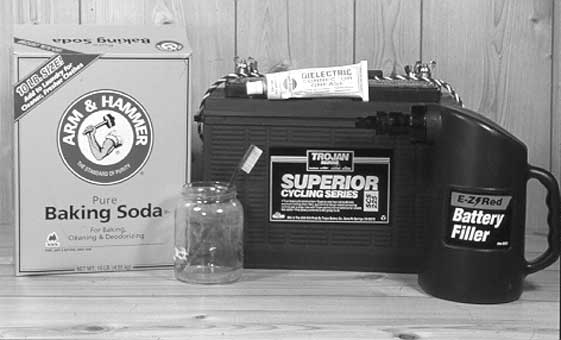
Trout are fickle this time of year, but sheepshead sure aren’t.
Many fishermen spend less time on the water during the winter, and that can be hard on their boat batteries. Proper off-season care includes keeping the batteries clean, and maintaining at least 75 percent of a full charge in them.
Taking a specific gravity reading from each cell with a hydrometer is the most accurate way to test a battery’s state of charge, but an accurate volt meter works for sealed batteries.
When using a voltmeter, unplug the battery charger the night before you check the battery’s state of charge. This gives the artificial surface charge present immediately after charging enough time to dissipate.
Charge levels differ slightly between battery brands and types, but the following numbers from Interstate Batteries represent a good rule of thumb.
A specific gravity of 1.265 or a voltage reading of 12.66 volts indicates a full charge. A specific gravity of 1.225 or a voltage reading of 12.45 volts indicates a 75-percent charge. A specific gravity of 1.190 or a voltage reading of 12.25 volts indicates a 50-percent charge. A specific gravity of 1.145 or a voltage reading of 12.05 indicates a 25-percent charge. A specific gravity of 1.1 or a voltage reading of 11.90 volts indicates a 0-percent charge, or a dead battery.
So, you need to maintain a specific gravity of at least 1.225 or a minimum voltage reading of 12.45 volts between fishing trips.
Water levels in the cells of conventional wet-cell batteries should be checked at least monthly to make sure the battery plates are covered. There are no levels to check on sealed AGM or gel batteries, but you can spot problems by looking closely at a battery’s case.
AGM and gel batteries must maintain a slight positive pressure in each cell in order to work. If the pressure is lost, the cell dies. Cells that lose pressure often look deflated as the sides of the case suck in toward the plates.
The battery case remains flat or slightly bulged next to cells containing normal pressure, and the difference is sometimes instantly obvious. The only fix for a deflated cell is a new battery.
The arrival of spring heralds the best fishing of the year for many anglers. It is no time to suffer battery problems, and as winter winds down you can take a few quick steps to prevent them.
Vented, wet-cell batteries are messy and need to be cleaned at least once a year. Water vapor and droplets of acid spew out of the vents onto the top of the battery during charging. The mess can accumulate to the point that it runs down the sides of the battery into the bottom of the battery’s box or tray.
I remove the battery and then wipe the mess up with paper towels. Then I mix a solution of baking soda and water, wet a sponge in it and give the battery box or tray a good cleaning. I also give the battery’s case a quick wiping with the sponge, taking care not to get any of the solution in the battery cells because it will also neutralize the acid in the electrolyte. An old toothbrush is great for getting into grooves and for cleaning threaded terminals.
The terminal connections on wires secured to battery posts can develop enough crud to look like a science project. While the wires are disconnected from the battery, I dip the terminal end of each wire in the baking soda solution, and keep it submerged until it stops bubbling.
I do the same with the connections from an onboard charger or the alligator clips from a portable charger. Then I dry the terminal end with a rag and scuff it gently with emery cloth until it shines. I take a wire brush to the battery terminals until they shine, and then reconnect all the wires.
Next, I coat the clean, tight and dry connections with dielectric grease (available at auto parts stores) to prevent corrosion.
Finally, I declare the battery system ready for trouble-free charging and use for another season.


